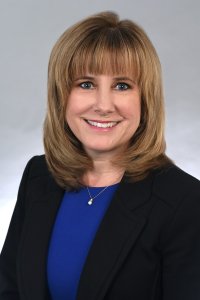
Jan 29, 2018
APRN Practice Report Shows Consumers Gaining Access to Care
 Legislation passed last year in more than 20 states will mean better access to care for many Americans from advanced practice registered nurses (APRNs), according to the 30th Annual APRN Legislative Update. Practice restrictions lifted from Wyoming to Washington, D.C. will allow APRNs to provide more of the services for which they are educated and certified, helping reduce the shortage of primary-care providers and improving health outcomes for more consumers.
Legislation passed last year in more than 20 states will mean better access to care for many Americans from advanced practice registered nurses (APRNs), according to the 30th Annual APRN Legislative Update. Practice restrictions lifted from Wyoming to Washington, D.C. will allow APRNs to provide more of the services for which they are educated and certified, helping reduce the shortage of primary-care providers and improving health outcomes for more consumers.
Residents in Illinois and South Dakota are among those who stand to reap the biggest benefits from improved laws that grant experienced APRNs more practice authority. Removing outdated restrictions on APRNs’ practice authority means greater access to care for consumers and a reduction in the cost of care delivery, plus it gives APRNs and other providers more time to focus on patients. In South Dakota, certified nurse practitioners and nurse-midwives may now prescribe controlled substances, a significant advance. These combined strides prompted the American Association of Nurse Practitioners to classify South Dakota as a “full practice” state. There is still progress to be made in Illinois, which limits the drugs APRNs may prescribe and still requires APRNs in hospitals to be supervised by physicians. Additionally, both states require newly certified APRNs to maintain a consultative relationship with a physician for a period of time before full practice authority is granted.

Susanne Phillips, DNP, FNP-BC, FAANP, is a nurse practitioner and clinical professor at the University of California, Irvine. She issues an annual report on changes to state practice, reimbursement, and prescriptive authority laws that impact advanced practice registered nurses.
The full report is called “30th Annual APRN Legislative Update: Improving access to healthcare one state at a time,” and in it, author Susanne Phillips, DNP, FNP-BC, FAANP, also detailed advances in 2017 in Arkansas, Minnesota, Nevada, Texas, and Wyoming. In those states, APRNs were granted authority to sign death certificates, among other documents.
In Vermont, new legislation requires commercial health plans and Medicaid to cover telemedicine services, and uses the term “healthcare provider.” This provider-neutral language encompasses a broader category of providers including APRNs. That means consumers can choose to receive telehealth services, and that the cost of their care will be covered whether their provider is a physician, an APRN, or another health care provider.
Another noteworthy change occurred in the District of Columbia, which joined five states that allow APRNs to recommend the use of medical marijuana to qualifying patients.
There were advances in the licensure area in 2017, as well. Fifteen states have now implemented 100 percent of the APRN Consensus Model. The model covers licensure, accreditation of programs, certification, and standardization of educational requirements for APRNs. Consistency among state requirements makes it easier for nurses to provide care in more than one state—which means their services are available to more people.
Looking Ahead
Coming up next on the Campaign blog: a review of the states in which laws restrict the care that APRNs can provide the public. States considering improving their laws in 2018 include Arkansas, Florida, Georgia, Kentucky, Massachusetts, Mississippi, Missouri, North Carolina, Oklahoma, Pennsylvania, South Carolina, and Wisconsin.
In Review
- 30th Annual APRN Legislative Update provides in-depth details on these and other legislative improvements in 2017.
- The Future of Nursing: Campaign for Action piece “Removing Barriers to Practice and Care” outlines progress to date and lists resources that can support future efforts to remove barriers to APRN practice.
- Charting Nursing’s Future 30 summarizes the issues, recent breakthroughs, and how to respond to myths and misconceptions.
- The Freakonomics podcast “Nurses to the Rescue!” also delves into current NP practice barriers (with a particular focus on California), discusses the shortage of qualified primary-care providers, and describes the positive patient health outcomes and economic benefits of removing practice barriers.
